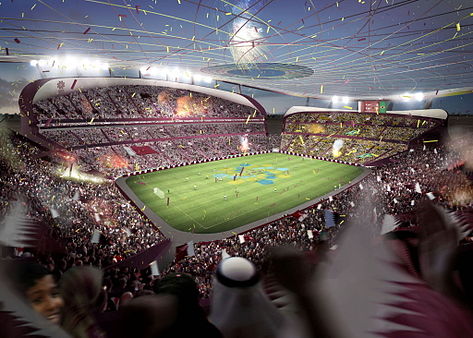Soccer City

The 2014 FIFA World Cup will be held in Brazil, running from the 12th of June until the 13th of July. Thirty-two countries from around the globe will play soccer matches in a dozen different stadiums each in a different Brazilian city, with the final match held at Estádio do Maracanã in Rio de Janeiro, the nation’s second-largest city. Of the 12 stadiums, six are new constructions and the other six are receiving significant upgrades. It’s a massive undertaking for the country and the cities alike.
If you follow World Cup soccer, the framework of the tournament and the newness of its venues is nothing new. The 2010 World Cup in South Africa featured matches at ten stadiums in ten cities; half of the buildings were built for the event while the other five were renovated shortly beforehand. The 2018 event in Russia will have matches in a dozen different stadiums in eleven cities, and nine of the stadiums are new constructions (the other three are likely going to be renovated). The 2022 World Cup, to be held in Qatar, is a little different in that there will be 12 different venues but in only seven different municipalities, but that is mostly because Qatar is relatively small. (At about 11,000 km^2, it’s less than one percent of the size of South Africa, and microscopic compared to 8.5 million km^2 Brazil and 17 million km^2 Russia.) Nine are new constructions and three others are being expanded.
Again, it’s quite common for nations awarded the World Cup to start massive public works. But Qatar has gone even further. They’re creating a brand new city.
Pictured above is an artist’s rendition of Lusail Iconic Stadium, a planned construction to be built for the 2022 World Cup. It will host the opening ceremonies and the final match and, therefore, is expected to be a very visible venue over the course of the tournament. The stadium will be in Lusail, Qatar, which is located about 15 km (about 9.3 miles) to the north of Qatar’s largest city, Doha. “Is located” is a bit misleading though, because as of this writing, Lusail doesn’t exist. (If you check the satellite view of the area in Google Maps, you’ll see a lot of sand and not much else.)
The city has been in development since 2006 and is expected to be completed sometime in 2015, although projects of this magnitude often, and understandably, run well past their original estimates. According to one contractor working on the project, when completed, Lusail will have enough housing for 175,000 residents (Wikipedia estimates it at 250,000), have 36 schools, and the state-of-the-art stadium — which, when not in use, also acts as a solar power collector for the neighboring areas. There will also be a lagoon, multiple high-end golf courses, and importantly, exactly 1,048 lamp posts.
In total, Lusail is expected to cost nearly $45 billion to build.
Bonus Fact: Qatar is expected to shell out nearly $220 billion in improvements to prepare for the 2022 World Cup (and that apparently doesn’t include the costs of building Lusail, although sources are unclear). That’s a lot of money, which goes without saying. But to give it some context: South Africa spent “only” $3.5 billion in support of the 2010 World Cup.
From the Archives: Sometimes, To Win, You Have to Play to Lose: The strangest soccer match ever played.
Related: An irregularly-shaped soccer training ball which… well, it’s weird looking.
